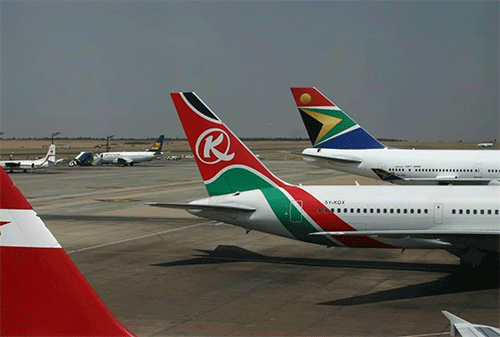Poor intra-Africa airline connectivity, inadequate infrastructure and unclear policies, inconsistent regulations and rising aviation taxes and other statutory charges are preventing African economies from reaching their full potential.
This warning was issued by the Airlines Association of Southern Africa (AASA).
The trade body, which held its annual general assembly in Luanda, Angola, last week, called on regional governments to open access to their markets and allow more routes and more flights where regulatory impediments were blocking growth.
AASA also cautioned that without a clear coordinated strategy for the development, production and supply of Sustainable Aviation Fuels (SAF) and improvements to airspace management to streamline traffic flows, the region’s airline industry would fail to meet the global net-zero 2050 carbon emissions target.
Africa accounts for two percent of global passenger and air cargo traffic and will need access to at least 15 billion litres of SAF a year by 2050 if it is to continue serving the continent’s economic and social needs by enabling trade, business, tourism and personal travel.
“We have an embarrassingly low level of intra-African connectivity and it is depriving Africa, its people and its economies from rising to their full potential,” said AASA CEO Aaron Munetsi. He urged the SADC governments to remove the obstacles hindering the industry’s expansion and connectivity.
“By doing so you will enable the economies and people you serve to flourish. Never have you held in your grasp a golden opportunity to make inspired decisions with such meaningful positive consequences and impact! Do not squander it!”
As remedies, AASA proposes that authorities permit the establishment of at least 200 new intra-Africa city pairs by 2030; ensure airports in the region are operationally fit-for-purpose, cost-efficient and subject to industry service level agreements; apply user charges, taxes and other statutory charges on air travel that are realistic, reflect the services and facilities provided.
AASA also proposed that governments make intra-Africa travel visa-free for all passport holders; provide a regulatory framework that enables the provision of competitive and affordable intra-Africa travel and air cargo services; and standardise training curricula, qualifications and licences so that anyone with aviation skills acquired in one African country can work anywhere on the continent.
The most recent (2019) econometric study of Africa’s air transport sector’s contribution to GDP estimates that regulatory adjustments to liberalise market access between 12 key African markets would provide an extra
155 000 jobs and US$1.3 billion in annual GDP across those countries.
It was estimated that a potential five million passengers a year were being denied the chance to travel between these markets due to unnecessary restrictions on establishing air routes. At the time, Africa’s aviation sector supported 6.9 million jobs and more than US$80 billion in GDP across the continent.
Based on the latest analyses, passenger and air cargo traffic to, from and within the SADC region traffic is about 27 percent lower than pre-pandemic levels.
“The numbers do not signal any failure. On the contrary, recent history has shown us the pre-pandemic market was over-traded. While the pruning that occurred has been painful, in most cases, it is stimulating healthier, viable and sustainable growth with improved yields. This is visible in the rising passenger load factors coming off the back of increased growth, which is now largely achieved organically, instead of through unsustainable sub-economic fares,” explained Munetsi.
In its state-of-the-industry overview, AASA painted a mixed picture, pointing to domestic and regional airlines’ vulnerability to rising living costs, oil and fuel prices on the march, inflation and a sub-optimal business climate. However, economic recovery in other parts of the world is manifesting in seeing unprecedented growth in inbound long-haul passengers, led largely by leisure travellers, people visiting friends and relatives as well as an emerging trend of African heritage and diaspora visitors from North America.
To deliver sustainable growth in passengers and cargo volumes, AASA says governments should implement more business and trade-friendly policies, adopt a visitor-welcoming digitalised visas, immigration and border management systems, invest in appropriate infrastructure, deliver reliable public infrastructure and public services supported by a clean, efficient civil service administration under a strong, ethical and accountable governance.
“These would lift business confidence, create more jobs and social stability. Importantly, they would lower the perceived level of risk that aircraft manufacturers, lessors, insurers, financiers and other foreign suppliers apply when doing business with African carriers.
“This will enable airlines, airports, air navigation service providers and others in the value chain to contain costs and pass on the savings to customers, in turn stimulating air travel and more economic growth in a virtuous cycle,” said Munetsi.
Fuel resilience
Over the past 18 months the industry had seen disruptions to its existing fuel supply systems and a lowering in available reserve stock levels. “Let’s heed the pandemic’s lesson about access to vaccines and strengthen our existing fuel procurement and distribution processes. At the same time, we must get in the queue early for SAF,” said Munetsi.
“Simultaneously, we urge governments, through their departments of energy, science, environment, transport and works, to expedite the implementation of suitable policies and measures to support local SAF development and production along with the necessary investments in refinery capacity, distribution, storage and supply systems along with the necessary security to protect them. We need the finance community to get behind this too,” he added.
AASA points out that additional fuel and emissions savings can be achieved by streamlining air traffic flows to eliminate the need for aircraft to fly in holding patterns before being allowed to approach and land at airports. Similarly, it urged airport operators and ground handling services to rapidly adopt the use of electric and hydrogen fuel cell-powered vehicles and ground equipment. “The expertise and technology behind energy production and storage is maturing in leaps and bounds – even here in the region, where many of the essential raw materials are extracted. These are no longer fanciful concepts,” Munetsi added.


